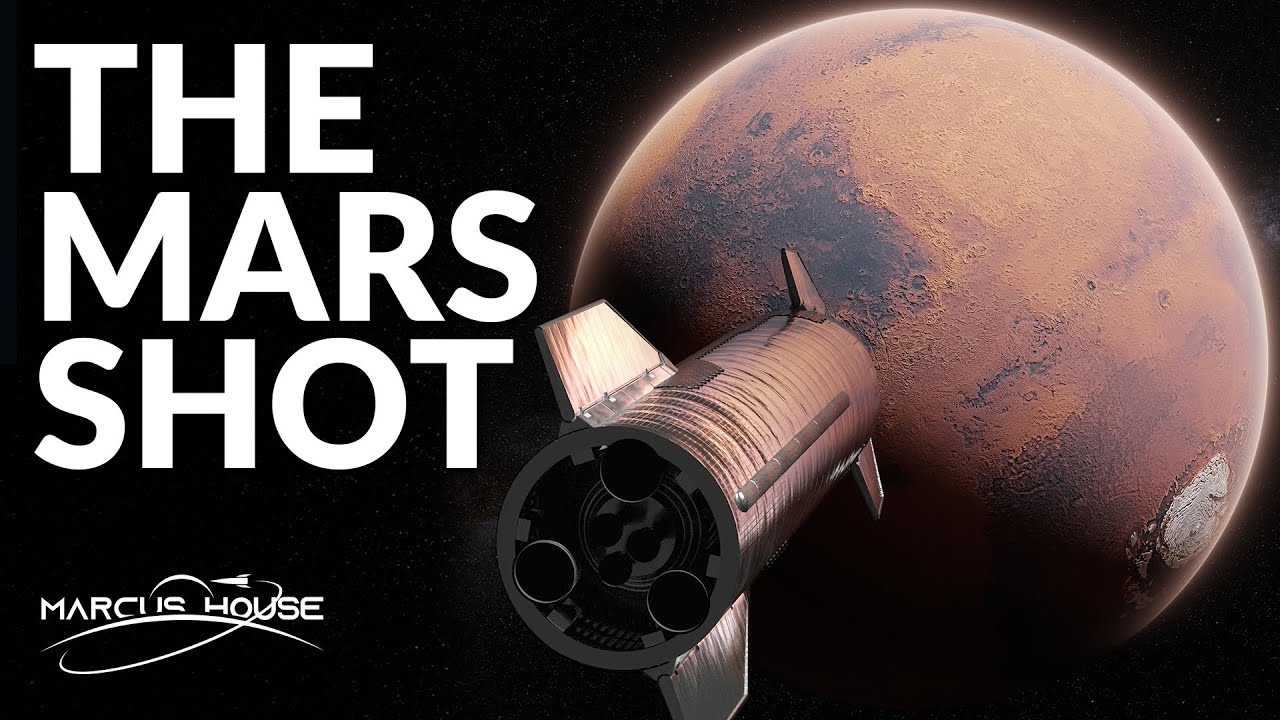SpaceX's plans for an Earth-Mars transportation infrastructure assume the ability to refuel Starships on Mars with methane and oxygen propellant manufactured from resources on Mars (carbon dioxide and water, plus electricity generated from solar or nuclear power), a process called “in-situ resource utilisation” (ISRU). But first the propellant plant has to be delivered to Mars, so initial Starship missions will necessarily be one-way, at least until the plant they deliver has produced sufficient fuel to permit them to return. Marcus House looks at the logistics of this, including the mass budget for a solar powered propellant plant.
Viewed on a historical time scale, the speed of technological progress - especially directed toward space exploration - is simply astonishing. Imagine what a history textbook written in 3021 would say…The amount of imaginative effort in furtherance of this endeavor shows humanity at its best. Let’s hope the ‘imaginative’ efforts of congress (sic) (the legacy media have shown us the capitalization counts) to tax it out of existence - via the ‘billionaires tax’ - doesn’t destroy Elon Musk’s ability/willingness to fund it.
Has the speed of technological progress in space exploration really been so astonishing?
Wright brothers flew their first plane a very short hop in 1903. Alcock & Brown flew non-stop across the Atlantic in 1919, only 16 years later.
Gagarin was the first cosmonaut in 1961. Apollo 11 landed on the Moon in 1969, only 8 years later.
But since then, things seem to have slowed down. The DC-X (Delta Clipper - Experimental) reusable rocket first flew and landed successfully in 1993; then the program died. It was not until 2014 – 21 years later – that SpaceX repeated the feat of landing a reusable rocket.
Thank Heavens for Elon Musk! If it were not for him, space exploration would still be stuck in the 1970s. Even with SpaceX showing the way, NASA is still stuck in the throw-away rocket past – as is ArianeSpace, and the European & Japanese Space Agencies. History shows that we could move faster. Let’s hope that the competition from SpaceX (and soon, probably, from China) spurs progress onwards.
One small quibble. Blue Origin actually beat SpaceX to accomplishing the flight and landing of a reusable rocket with New Shepard NS2.1 on 2015-11-23, This was a suborbital flight, but so were all of the flights of the DC-X. SpaceX performed their first successful recovery of a first stage on Falcon 9 flight 20 on 2015-12-22. This was the first recovery of the first stage of an orbital launcher, which is a much more difficult accomplishment (although to quibble again, it’s possible to argue that the recovery at sea of the Space Shuttle’s solid rocket boosters was a similar event).
There were also numerous other successful rocket flights and landings prior to these two, including SpaceX’s grasshopper flights and Masten Space Systems’ many low altitude tests, but these aren’t usually counted since they didn’t get close to the Karman line. Also ambiguous is how you score the SpaceShipOne flights: these were also rocket flights which went above the Karman line, were recovered intact, and flew again. Does horizontal winged landing not count? And then, there’s the X-15…
In addition to seriously advancing the reusability concept, Musk has the all-important and necessary attitude towards risk that enables his projects to progress. NASA and their ilk are hobbled by extreme risk avoidance.
One of my favorite saved videos, and one that I watch if and when I need an emotional lift, is the Falcon Heavy’s test flight, launching a rocket-man in a Tesla into the void, no less.
Thanks for those observations, Mr. W. What really grabbed me about this topic was the issue of the rate of technological progress. I recall in the early 1990s seeing one of those throw-away filler items at the end of a TV “news” broadcast showing the DC-X launch, move sideways, dance, and then land on its tail. I was stunned! This was Sci-Fi come to life! This changed everything!!
But it changed nothing. NASA and the other space agencies carried on doing what they were doing, and the DC-X was forgotten. It was as if people had seen the first automobile, shrugged, and carried on building horse-drawn wagons – which I suppose many of them did.
As the years extended into decades without any further news, I wondered if there was some subtlety which made the reusable rocket less economic than the one-time throw-away rocket. Surely the smart people in charge of NASA would not ignore a potential game changer which could possibly reduce the cost of getting into space? But apparently they did.
The underlying issue here may be the importance of competition in technological progress. Without someone breathing down our necks, we slack off and don’t push ourselves hard. Thank Heavens for Elon Musk!
I really think he epitomised that attitude when, during the long sequence of failures before the first successful first stage landing, somebody needled him about how it was going and he said, “We’re getting back bigger pieces every time.”
Yeah, I loved that line!
Ford commercialized Benz automobile
Bell commercialized Meucci telephone
Boeing commercialized Wright airplane
Musk commercialized Goddard rocket
